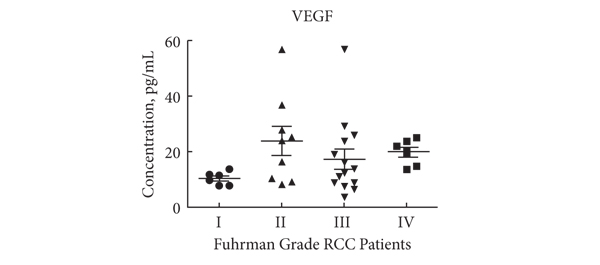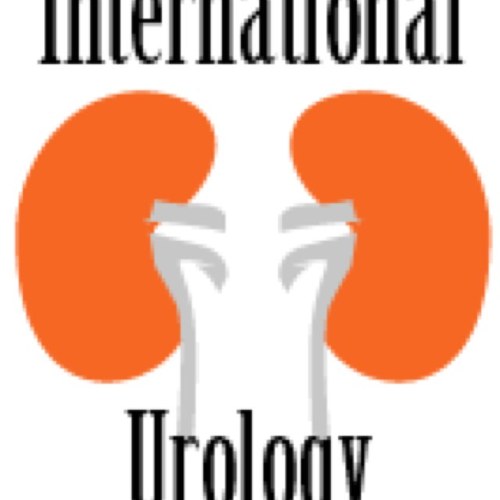
Heroes
2 Comments
/
Being an Irishman, and enthusiastic rugby supporter, I, like many other rugby fans, was much vexed when our Irish rugby hero, Brian O'Driscoll, was dropped for the deciding Test for the British and Irish Lions versus Australia this summer. This vexation was due somewhat to national pride, but more importantly, because he is one of my sporting heroes. This outpouring of emotion on the demotion of someone I've never met led me to contemplate the nature of heroism and heroes, how they affect us, and…

Editorial: Regulatory T cells in renal cell carcinoma: additional fuel to the bonfire of debate
In the developing immune system, all T cells are positively selected in the neonatal thymus for the ability to recognize self-antigens, the major histocompatibility complex (MHC) proteins. Thus, the mature T-cell repertoire is trained to ‘see’ foreign pathogens ‘complexed’ with those self-antigens (‘MHC-presentation’). Fundamentally, this requirement predisposes mammalian systems to the development of autoimmune diseases, as all T cells are self-reactive. That such diseases are the exception…

Conference Report – ERUS 2013 – live surgery spectacular in Stockholm
When it comes to live surgery meetings, one of the biggest and best of them all is the EAU Robotic Urology Section (ERUS) Congress (formerly the European Robotic Urology Symposium). The 10th edition of ERUS took place in Stockholm this week and continued the tradition of spectacular live robotic assisted surgery, along with scientific sessions dealing with issues around robotic assisted surgery. Following discussions with the EAU over the past two years, ERUS has now become an official section of…

Chemoprevention of Prostate Cancer – Is it justified?
The September #urojc International Urology Journal Club discussion on twitter was based on the paper “Long-Term Survival of Participants in the Prostate Cancer Prevention Trial” published in the New England Journal of Medicine a few weeks earlier.
In 2003, the Prostate Cancer Prevention Trial (PCPT) proved what it set out to do. It significantly reduced the risk of PCa. Unfortunately, the champagne was never even taken off ice, as finasteride was also associated with an increased risk of high-grade…

Urological oncology in the BJUI
Urological oncology is increasingly multi-disciplinary, and hence competitive for high impact thought leadership. Innovation leading to paradigm changes may come from a number of different ideas and sources. Effective leadership in our specialty certainly requires technical innovations in surgical treatments, but also pivotal roles in improving the process of diagnosis, staging, patient counselling, multi-modal therapy, and ultimately evidence-based clinical guidelines. The ultimate end-result of…

Editorial: Salvaging failed radiation therapy: does the tumour location permit a less toxic approach?
In the introduction to their manuscript in this issue of the BJUI, Meeks et al. outline a significant challenge for physicians managing prostate cancer: from the estimated 240 000 diagnosed annually (USA) to the 120 000 choosing radiation, to the 40 000 estimated biochemical failures in the first 5 years who may benefit from additional local therapy to avoid local and/or systemic progression. The basis of these calculations was from conventional beam radiation, and although we expect dose-escalation…

Editorial: Micro-PNL vs RIRS: dealer’s choice? The devil is in the details
Advances in minimally invasive endourological techniques continue to provide the Urologist a myriad of options for the management of symptomatic renal calculi. Previously, shock wave lithotripsy (SWL) or standard percutaneous nephrolithotomy (PNL) were the only two endourological options available. Yet, limitations of these two ‘standard’ techniques result from hard or dependent stones (for SWL) or the potential of increased morbidity during the treatment of small renal calculi (for PNL). Now…

Conference Report: Prostate Cancer World Congress 2013, Melbourne, Australia
Melbourne played host to the Prostate Cancer World Congress last week. With over 1,000 delegates and a stellar International faculty comprising of 21 global leaders, it was no surprise that tweeters worldwide battled off sleep to keep up with the action.
Amidst a buzzing crowd, overlooking the iconic @MCG #pcwc13 President Tony Costello reminisced about the very first conference; 2 speakers, 27 delegates made up largely of residents only fourteen years ago.…

Is Gleason 6 really cancer?
The recently published Viewpoint of the National Cancer Institute working group on "Overdiagnosis and Overtreatment in Cancer" by Esserman and colleagues [1] raises continued discussion as to whether some lesions currently classified as carcinomas should have the designation of "cancer" removed, based on low rates of progression, death, and other adverse outcomes. Pertinent to those interested in urology, a central example in the article is prostatic adenocarcinoma.
One simple answer to this question…

Editorial: Time to raise the bar in localised prostate cancer
In this issue of BJUI, Ficarra et al. present the long-term (mean 81.3 months) follow-up of a case series of 183 men that underwent robot-assisted radical prostatectomy (RARP) at a single academic medical centre in Europe. To the authors’ credit, they report both cancer control and patient-reported outcomes, using well-known validated and reliable instruments to assess both urinary and sexual function. Like others before them, Ficarra et al. demonstrate that RARP is a safe and effective…
